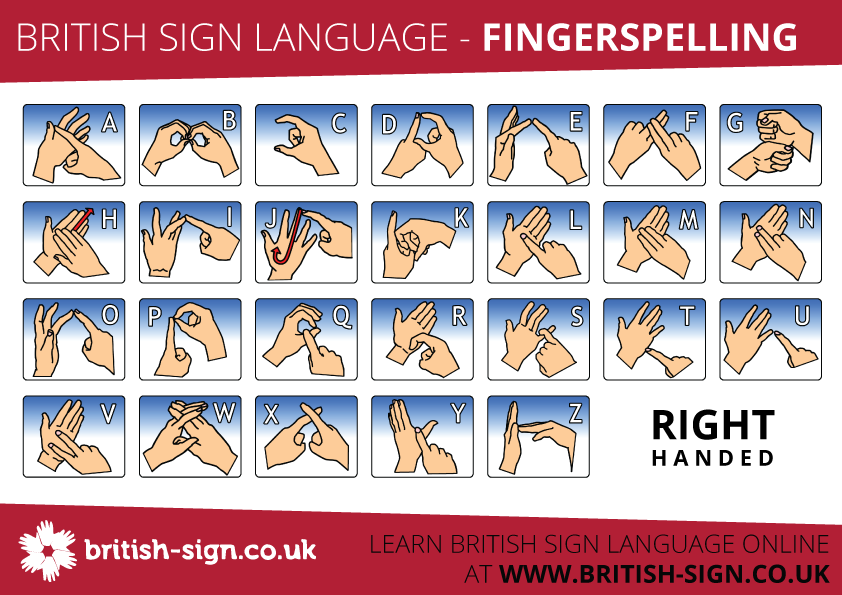Fingerspelling
Fingerspelling is a way of spelling words using hand movements and is a part of learning sign language. Each letter of the alphabet has a different sign.
British Sign Language (BSL) uses a two-handed version, whereas others, such as American Sign Language (ASL) use only one. There are several reasons why children may benefit.
Firstly, it is great fun! Children love the idea of secret codes and this is like learning a code.
Secondly, it can help with everyday spelling and acquisition of the English language. Children will be practising using the alphabet; they will have a greater understanding of the fact that words are made of vowels and consonants as well as it being a new and different way to practise spelling.
Last, but not least, it promotes inclusivity. Children might be able to communicate in a small way with a deaf or hearing-impaired person and would better appreciate the communication difficulties they face.
Fingerspelling can be picked up quickly. You might begin by teaching the vowels, pointing to each finger in turn, starting with the thumb – a. e, i, o, u. Children might then learn to fingerspell their own names and try signing CVC words in partners. Note that expressive skills will be easier than receptive skills to start with i.e. fingerspelling yourself is easier than interpreting what another person is spelling to you. Children will really have to concentrate on what their partner is spelling and put the letters together to decode words.
You will need to explain to children that fingerspelling is only a part of learning sign language. The vast majority of words have their own signs. To use fingerspelling alone may sound like a simple idea, but signing every letter would take a very long time and become very difficult and confusing especially when having a proper conversation.
The fingerspelling alphabet is used to spell out words for which there is no sign (the names of people, places, films, made-up-words, etc.) or to clarify, when somebody may not know a particular sign. The signs in the alphabet are also used to begin some words, followed by another movement; for example ‘vegetable’ is the sign for ‘v’ tapped twice on the palm.
Many free resources are available by searching the web, such as:
Download a FREE finger spelling alphabet PDF here.
Get a FREE online finger spelling game here
Download the British Sign Language finger spelling app here
With thanks to Krystyna Pickering (Teacher of the Deaf) for her help with this blog post.




